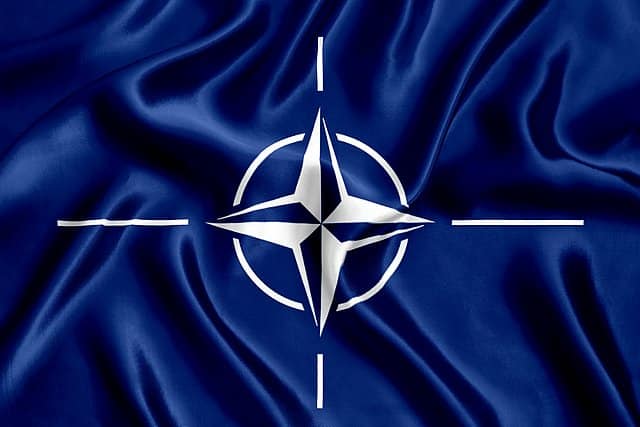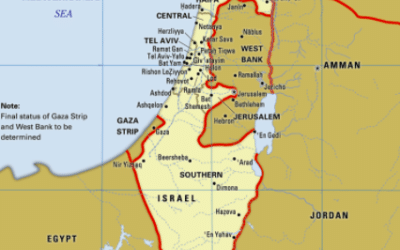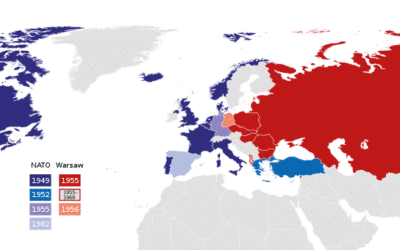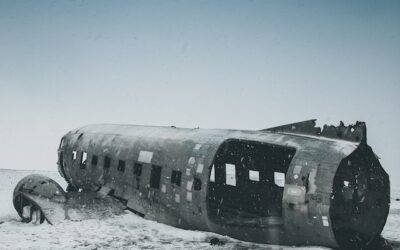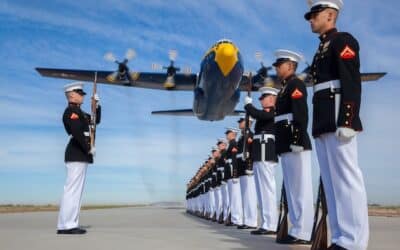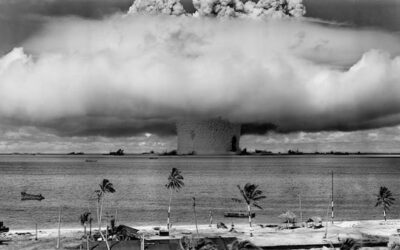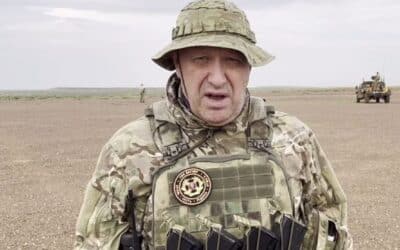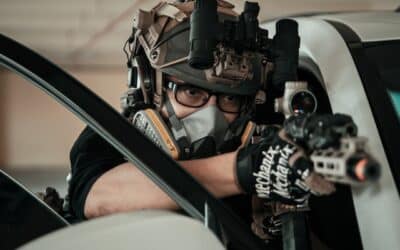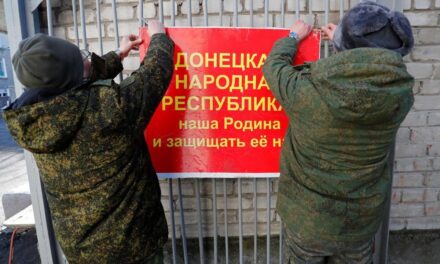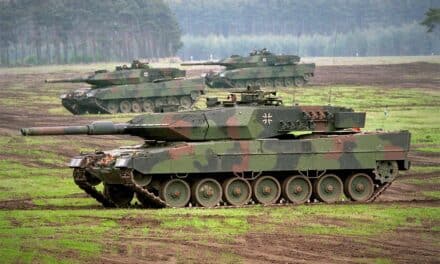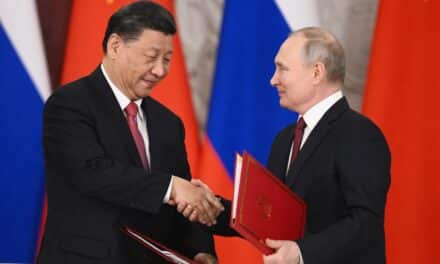Image: https://www.mitmischen.de/
NATO members are a collective force united under a shared goal of peace and security. But, while unity is their strength, some members bring more to the table than others. This blog post will delve into the world of NATO, spotlighting the 10 strongest NATO members in this alliance. We’ll consider various factors, from military might to economic strength, giving you a comprehensive look at these powerhouses. So, let’s get started. It’s time to meet the titans of NATO.
1.United States
Regarding military strength, the United States stands at the forefront. As a member of NATO, the U.S. is crucial in ensuring the alliance’s collective defense capabilities are robust and effective. In this section, I will delve into the military strength and defense budget of the United States, shedding light on why it is considered one of the strongest NATO members.
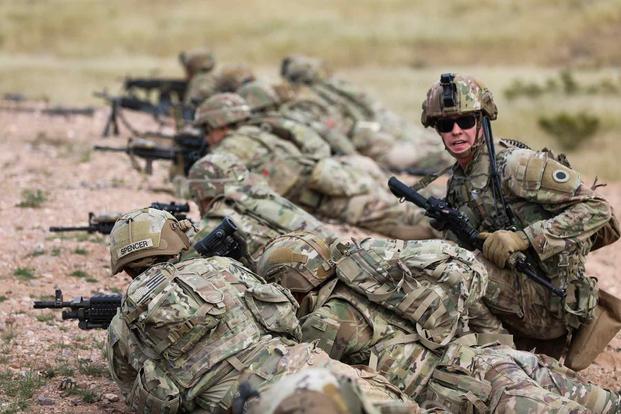
Image: https://www.military.com/
Military Strength
The military strength of the United States is unmatched. With state-of-the-art equipment, advanced technology, and highly trained and skilled personnel, the U.S. military is a force to be reckoned with. The country boasts a powerful air force, a formidable navy, and a strong army. This comprehensive military capability allows the United States to project its power globally and swiftly respond to threats or conflicts.
The U.S. military’s air force is a critical component of its strength. Its vast fleet of advanced fighter jets, bombers, and transport aircraft enables it to conduct aerial operations with precision and efficiency. Additionally, the United States maintains a network of military bases strategically located worldwide, further enhancing its ability to project air power across continents.
The navy of the United States is the most powerful and technologically advanced in the world. It operates a vast fleet of aircraft carriers, submarines, destroyers, and other naval vessels. These ships have the best weaponry and systems, enabling the U.S. Navy to dominate the seas and protect vital maritime trade routes.
Furthermore, the United States Army is a skillful ground force equipped with modern weapons and armored vehicles. Its soldiers undergo rigorous training and are ready to respond swiftly to any threat. The U.S. Army’s strength lies in its numbers and ability to integrate with other military branches, ensuring a cohesive and coordinated approach to operations.
Defense Budget
Behind the United States military prowess lies its significant defense budget. The country allocates substantial resources to its defense sector, allowing it to develop and maintain cutting-edge technology, equipment, and infrastructure. In 2020, the U.S. defense budget stood at a staggering $732 billion, making it the world’s largest defense spender.
This substantial investment enables the United States to stay ahead regarding military innovation and research. It allows for the development of advanced weapons systems, such as stealth aircraft, crewless aerial vehicles (UAVs), and precision-guided munitions. Moreover, a significant portion of the defense budget is dedicated to the training and welfare of military personnel, ensuring they are equipped with the necessary skills and support to carry out their duties effectively.
In conclusion, the United States has immense military strength and the resources to back it up. With its advanced technology, highly skilled personnel, and significant defense budget, the U.S. plays a pivotal role within NATO. Its military capabilities contribute to the alliance’s collective defense, allowing its members a safer and more secure world.
2.United Kingdom
The United Kingdom, a prominent North Atlantic Treaty Organization (NATO) member, boasts strong armed forces and notable nuclear capabilities. Let’s dive into these aspects in more detail.

Image: https://www.express.co.uk/
Armed Forces
The United Kingdom prides itself on its well-trained and highly skilled armed forces. Comprising the British Army, Royal Navy, and Royal Air Force, the country’s military is equipped to handle various domestic and international security challenges.
The British Army, known for its professionalism and discipline, comprises various regiments and units. From infantry to armored divisions, the army is prepared to undertake multiple operations on land, ensuring the safety and security of the nation.
The Royal Navy, with its rich history and tradition, is known as one of the most formidable naval forces in the world. Equipped with a fleet of technologically advanced warships, submarines, and aircraft carriers, the Royal Navy plays a vital role in safeguarding the nation’s maritime interests and projecting global power.
The Royal Air Force, with its modern and versatile aircraft, can conduct air operations across different environments. This includes air defense, surveillance, and strategic bombing missions. The RAF’s commitment to innovation and adaptability ensures the United Kingdom maintains a strong presence in the skies.
Nuclear Capabilities
The United Kingdom is one of the few NATO members with nuclear weapons, making it a key player in nuclear deterrence. The country’s nuclear capabilities are maintained through its Trident nuclear program.
The Trident program is the nation’s primary nuclear deterrent based on the Vanguard-class submarines. These submarines are equipped with Trident II D5 ballistic missiles capable of delivering devastating atomic payloads. The United Kingdom’s possession of nuclear weapons underscores its commitment to the defense of its interests and those of its allies.
The United Kingdom’s nuclear capabilities are critical to NATO’s collective defense strategy. By having a credible and robust nuclear deterrent, the country contributes to the overall security and stability of the alliance.
In summary, the United Kingdom’s armed forces exemplify professionalism and skill, with the British Army, Royal Navy, and Royal Air Force integral parts of the country’s defense apparatus. Furthermore, the United Kingdom’s possession of nuclear weapons underscores its commitment to ensuring its people’s and its allies’ safety and security.
3.France
France, a North Atlantic Treaty Organization (NATO) member, is renowned for its military prowess and strategic capabilities. France plays a key role in the alliance’s defense efforts with a strong army and formidable air force. This section will delve into France’s impressive Army Strength and Air Force Capabilities.
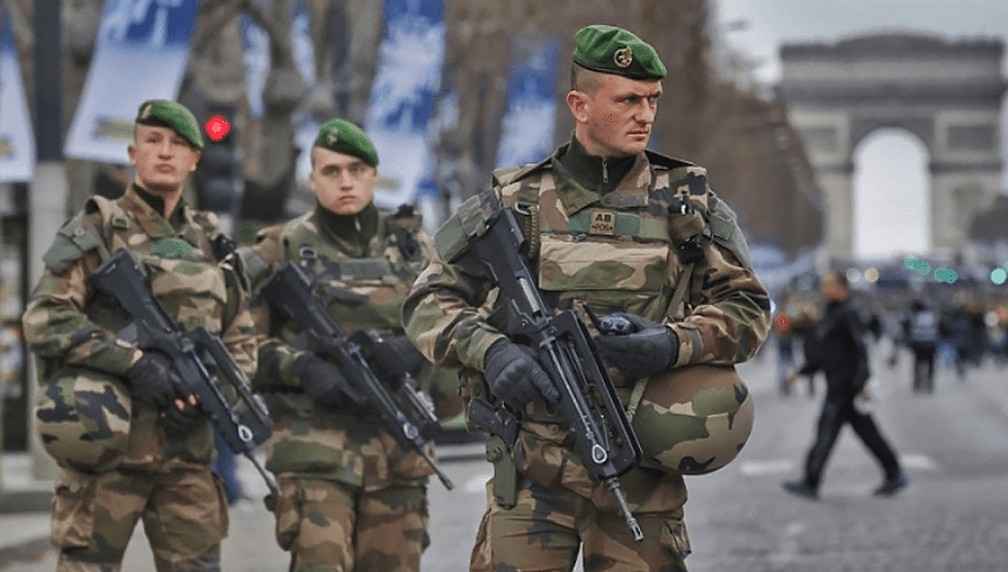
Image: https://themeghalayan.com/
Army Strength
The French Army is a pillar of strength within NATO, boasting a highly trained and well-equipped force. With a rich military heritage, France has consistently demonstrated its commitment to maintaining a robust and capable army.
France’s army comprises various specialized units, including infantry, armored divisions, and airborne troops. These units work together, ensuring a versatile and practical force ready to tackle any mission. The French Army’s advanced equipment, such as tanks, artillery, and modern communication systems, further strengthened their operational capabilities.
One notable aspect of the French Army is its emphasis on rapid deployment and expeditionary operations. France has a strong tradition of engaging in international missions, demonstrating its ability to project power beyond its borders. This mobility and agility enable France to swiftly respond to crises and contribute to NATO’s collective defense efforts. France also has the Foreign Legion, which is a top-tier army. They are like Mossad in Israel and doing operations on the Ground.
Air Force Capabilities
France’s Air Force is a critical component of its military might, equipped with advanced aircraft and cutting-edge technology. This formidable aerial force protects French airspace and supports NATO’s joint operations.
With a diverse fleet of fighter jets, transport aircraft, and helicopters, the French Air Force boasts a wide range of capabilities. Notably, the Rafale fighter aircraft is the backbone of France’s air superiority operations. Renowned for its agility and versatility, the Rafale can conduct air-to-air combat, air-to-ground strikes, and reconnaissance missions.
Furthermore, France possesses a solid strategic airlift capability, allowing for the rapid transportation of troops and supplies to various locations worldwide. The French Air Force also maintains a fleet of helicopter units, which play a vital role in combat support, search and rescue, and medical evacuation operations.
In addition to its advanced aircraft, France has invested in cutting-edge technology and research to enhance their air force capabilities. This includes advancements in radar systems, communication networks, and precision-guided munitions, further bolstering their effectiveness in modern warfare scenarios.
In conclusion, France’s Army Strength and Air Force Capabilities make it a formidable member of NATO. With their highly trained personnel, advanced equipment, and commitment to rapid deployment, France contributes significantly to the collective defense efforts of the alliance. The nation’s military prowess and strategic capabilities solidify its position as one of the strongest NATO members.
4.Germany
As one of the strongest members of NATO, Germany is pivotal in ensuring the alliance’s strength and security. With a robust military and advanced capabilities in both land forces and naval operations, Germany stands as a formidable force within the organization. This article will dive into Germany’s land forces and naval capabilities, highlighting their contributions to NATO’s collective defense.
Land Forces
Germany’s land forces, known as the Bundeswehr, are vital to NATO’s defense strategy. With a strong emphasis on modernization and technological advancements, Germany’s army has state-of-the-art equipment and highly trained personnel.
One of the critical assets of the German land forces is their armored divisions. These divisions have advanced tanks, such as the Leopard 2A7, renowned for their exceptional firepower and protection. These formidable tanks give Germany a significant advantage in ground operations, enhancing its ability to deter potential threats and defend NATO’s shared interests.
Furthermore, Germany’s ground forces possess a comprehensive array of artillery and infantry systems crucial in maintaining a robust defense posture. These include self-propelled howitzers, rocket artillery, and a wide range of infantry fighting vehicles designed to ensure operational effectiveness and flexibility in various combat scenarios.
Naval Capabilities
Germany’s naval capabilities are equally impressive, further solidifying its position as a critical player within NATO. The German Navy, or Deutsche Marine, boasts a formidable fleet equipped with technologically advanced vessels to project power and protect maritime interests.
Its fleet of highly capable frigates is at the heart of Germany’s naval capabilities. These versatile warships are equipped with advanced sensor systems, missile systems, and anti-submarine warfare capabilities, enabling them to operate effectively in various maritime environments. Additionally, Germany operates modern corvettes, mine countermeasure vessels, and submarines, further enhancing its naval strength within NATO.
Germany’s naval aviation is another crucial component of its maritime capabilities. The German Navy’s maritime patrol aircraft and helicopters provide essential surveillance, reconnaissance, and anti-submarine warfare capabilities. These assets significantly contribute to NATO’s marine security efforts, ensuring the protection of vital sea lanes and the deterrence of potential threats.
In conclusion, Germany’s land forces and naval capabilities make it a key player within NATO. Germany actively contributes to the alliance’s strength and security with its technologically advanced equipment, highly trained personnel, and commitment to collective defense. Germany demonstrates its unwavering resolve to protect NATO’s shared values and interests by continuously modernizing its military and maintaining a strong defense posture.
5.Canada
Canada, known for its natural beauty and friendly people, is vital to the North Atlantic Treaty Organization (NATO). This section will explore two aspects contributing to Canada’s strength within NATO: its military expenditure and special forces.

Military Expenditure
Regarding military expenditure, Canada has consistently demonstrated its commitment to maintaining a strong defense. In 2020, Canada’s defense budget reached around $22.2 billion, making it one of the top spenders among NATO countries. This significant investment allows Canada to enhance its military capabilities and contribute to collective security efforts within the alliance.
Canada’s robust military expenditure enables the country to modernize its defense infrastructure, enhance training programs for its armed forces, and acquire advanced weaponry and technologies. By continually investing in its defense capabilities, Canada strengthens its position as a reliable and capable ally within NATO.
Special Forces
In addition to its military expenditure, Canada’s special forces play a vital role in NATO’s operations. The Canadian Special Operations Forces Command (CANSOFCOM) is an elite unit comprising highly trained personnel who excel in unconventional warfare, counter-terrorism operations, and special reconnaissance missions.
CANSOFCOM consists of specialized units such as the Joint Task Force 2 (JTF2), the Canadian Special Operations Regiment (CSOR), and the Canadian Joint Incident Response Unit (CJIRU). These units undergo rigorous training and maintain a high level of readiness to respond to various threats, both domestically and internationally.
The expertise and capabilities of Canada’s special forces have made them valuable assets within NATO. They actively participate in joint exercises, training programs, and multinational operations, working closely with other allied special powers to ensure the success of NATO missions and maintain global security.
In conclusion, Canada’s strong military expenditure and exceptional special forces make it a formidable member of NATO. The country’s commitment to defense in terms of financial investment and highly skilled personnel demonstrates its dedication to upholding collective security within the alliance. As Canada continues contributing to NATO’s efforts, its valuable role in maintaining peace and stability in the international community remains undeniable.
6.Italy
Italy, a proud member of NATO, boasts a formidable military force contributing significantly to the alliance’s strength and capabilities. With its robust army size and impressive military technological advancements, Italy stands out as a significant player within the organization.
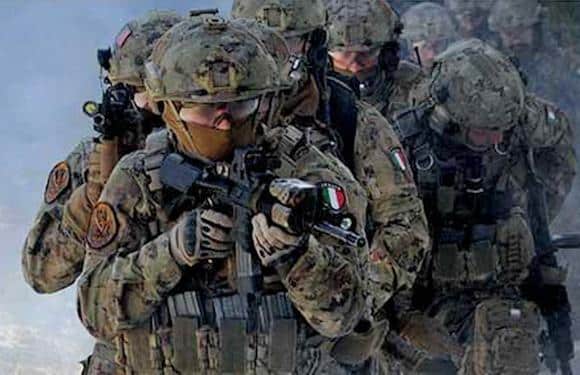
Army Size
Italy’s army size is a crucial factor in its contribution to NATO. With approximately 180,000 active personnel, Italy possesses a substantial force capable of responding to various security challenges. This sizable army enhances NATO’s collective defense capabilities and reinforces the alliance’s deterrence against potential threats.
Italy’s commitment to maintaining a well-equipped and capable army is evident through its defense infrastructure and personnel development investments. Through continuous training and modernization efforts, Italy ensures that its army remains at the forefront of military prowess.
Military Technological Advancements
In addition to its impressive army size, Italy has made significant military technological advancements. The country is committed to innovation and research, developing the best military equipment and technologies.
Italy’s defense industry is vital in advancing military technology, providing state-of-the-art equipment to its armed forces. This technological prowess includes aerospace, naval systems, and land-based defense capabilities advancements.
Italy has been actively developing advanced military aircraft, such as the Eurofighter Typhoon and the F-35 Lightning II. These high-performance fighter jets showcase Italy’s expertise in aerospace technology and contribute to NATO’s overall air superiority.
Italy’s commitment to technological advancements extends beyond the aerospace domain. The country also excels in naval systems, including developing advanced naval vessels and submarines. Such capabilities bolster NATO’s maritime presence and ensure the alliance’s readiness to safeguard global waters.
Furthermore, Italy’s land-based defense capabilities are reinforced by its development of armored vehicles, artillery systems, and other ground-based military equipment. These advancements enable Italy to contribute effectively to NATO’s land operations and enhance the alliance’s overall combat effectiveness.
In conclusion, Italy’s substantial army size and remarkable military technological advancements position it as a key NATO member. With a robust force and cutting-edge equipment, Italy is crucial in ensuring the alliance’s collective defense capabilities. As a proud contributor to NATO’s strength, Italy reaffirms its commitment to international security and stability.
7.Spain
Spain is one of the strongest and most influential North Atlantic Treaty Organization (NATO) members. As a country with a rich military history and strategic location, Spain plays a crucial role in ensuring the security and stability of the alliance. This section will explore Spain’s impressive naval strength and air force capabilities.

Naval Strength
Spain boasts a formidable naval force contributing significantly to NATO’s maritime operations. Spain has a natural advantage in naval power projection, with a coastline touching the Atlantic and Mediterranean oceans. Its fleet consists of modern and versatile vessels capable of carrying out various missions.
The Spanish Navy operates various warships, including aircraft carriers, frigates, destroyers, submarines, and patrol vessels. These vessels have state-of-the-art technology and weaponry, ensuring Spain can protect its maritime interests and contribute to NATO’s collective defense efforts.
Spanish naval capabilities go beyond its impressive fleet. The country also has extensive maritime infrastructure, including well-equipped ports and strategically located naval bases along its coastlines. This infrastructure enables Spain to efficiently support its naval operations and contribute to NATO’s overall maritime strength.
Air Force Capabilities
Spain’s air force is another vital component of its military prowess within NATO. The Spanish Air Force is equipped with advanced aircraft and highly skilled personnel and is critical in national defense and NATO’s air operations.
The Spanish Air Force operates a diverse fleet of aircraft, including fighter jets, transport planes, and helicopters. These aircraft can carry out various missions, such as air superiority, air defense, surveillance, and humanitarian assistance. Spain’s air force continuously modernizes its fleet, ensuring it remains at the forefront of technological advancements.
In addition to its impressive aircraft, the Spanish Air Force possesses well-established airbases strategically located throughout the country. These airbases serve as crucial hubs for air operations, allowing Spain to respond swiftly to any potential threat and effectively support NATO’s collective defense efforts.
Conclusion
Spain’s exceptional naval strength and air force capabilities make it a key player within NATO. With its modern fleet, advanced aircraft, and strategic infrastructure, Spain is well-positioned to protect its national interests and contribute to the alliance’s collective security. Let’s explore the other NATO members and their significant contributions to the alliance’s strength and unity as we move forward.
8.Turkey
When discussing the most vital NATO members, Turkey stands out as a formidable force. With a rich history and strategic location, Turkey’s land forces play a crucial role in its defense and contributions to the alliance.
Turkey boasts a well-equipped and highly trained land force known as the Turkish Land Forces (Türk Kara Kuvvetleri). This military branch conducts ground operations and safeguards the nation’s borders.

Land Forces
The Turkish Land Forces comprise various units, including infantry, armored divisions, artillery, and special forces.
The infantry in the Turkish Land Forces forms the backbone of the army. These dedicated soldiers undergo rigorous training and are equipped with modern weaponry. With their unwavering determination and commitment, they are always prepared to defend the nation and fulfill their duties within the NATO alliance.
The armored divisions of the Turkish Land Forces are another vital component. These units are equipped with advanced tanks and armored vehicles, ensuring that Turkey maintains a strong armored presence. With their mobility and firepower, they provide a significant advantage in both offensive and defensive operations.
The Turkish Land Forces also possess a formidable artillery corps. These highly skilled soldiers operate various artillery systems, including howitzers and rocket launchers. Their precision and expertise are essential in providing long-range support to ground operations.
Lastly, Turkey’s special forces, known as the Maroon Berets or Bordo Bereliler, are renowned for their elite training and exceptional capabilities. These highly trained commandos are prepared for unconventional warfare and counter-terrorism operations. Their expertise allows them to excel in high-risk missions at home and abroad.
Defense Industry
Turkey’s defense industry is another factor that contributes to its strength within NATO. The country has made significant strides in developing its defense capabilities, reducing its reliance on foreign suppliers. This self-sufficiency and innovation make Turkey a valuable ally within the alliance.
The Turkish defense industry has successfully produced various military equipment, including armored vehicles, crewless aerial vehicles (UAVs), and advanced naval vessels. This capability highlights Turkey’s commitment to enhancing its military capabilities, ensuring its readiness to defend its borders, and contributing to NATO’s collective defense.
One notable achievement of Turkey’s defense industry is the development of the indigenous main battle tank, the Altay. This advanced armored vehicle incorporates state-of-the-art technologies, providing enhanced protection, firepower, and mobility to the Turkish Land Forces.
Additionally, Turkey has become a leading producer of UAVs, such as the Bayraktar TB2. These crewless aerial vehicles have proven their effectiveness in surveillance, reconnaissance, and combat operations. Their successful deployment has gained international recognition and contributed to Turkey’s growing influence within the alliance.
Furthermore, Turkey’s naval industry has made significant advancements, producing advanced warships and submarines. These vessels enhance Turkey’s maritime capabilities and contribute to NATO’s collective defense in the Mediterranean region.
In conclusion, Turkey’s land forces and defense industry make it a formidable member of NATO. Its well-trained land forces, including infantry, armored divisions, artillery, and special forces, demonstrate the nation’s commitment to maintaining a solid ground presence. Moreover, Turkey’s defense industry’s achievements in producing advanced military equipment showcase its self-sufficiency and contribution to the alliance’s collective defense. As NATO continues to evolve, Turkey’s role as a strong contender remains crucial in ensuring the security and stability of the coalition.
9.Poland
Regarding the strength of NATO members, Poland is one of the most formidable allies. With a rich military history and a commitment to national defense, Poland has made significant contributions to NATO’s collective security.
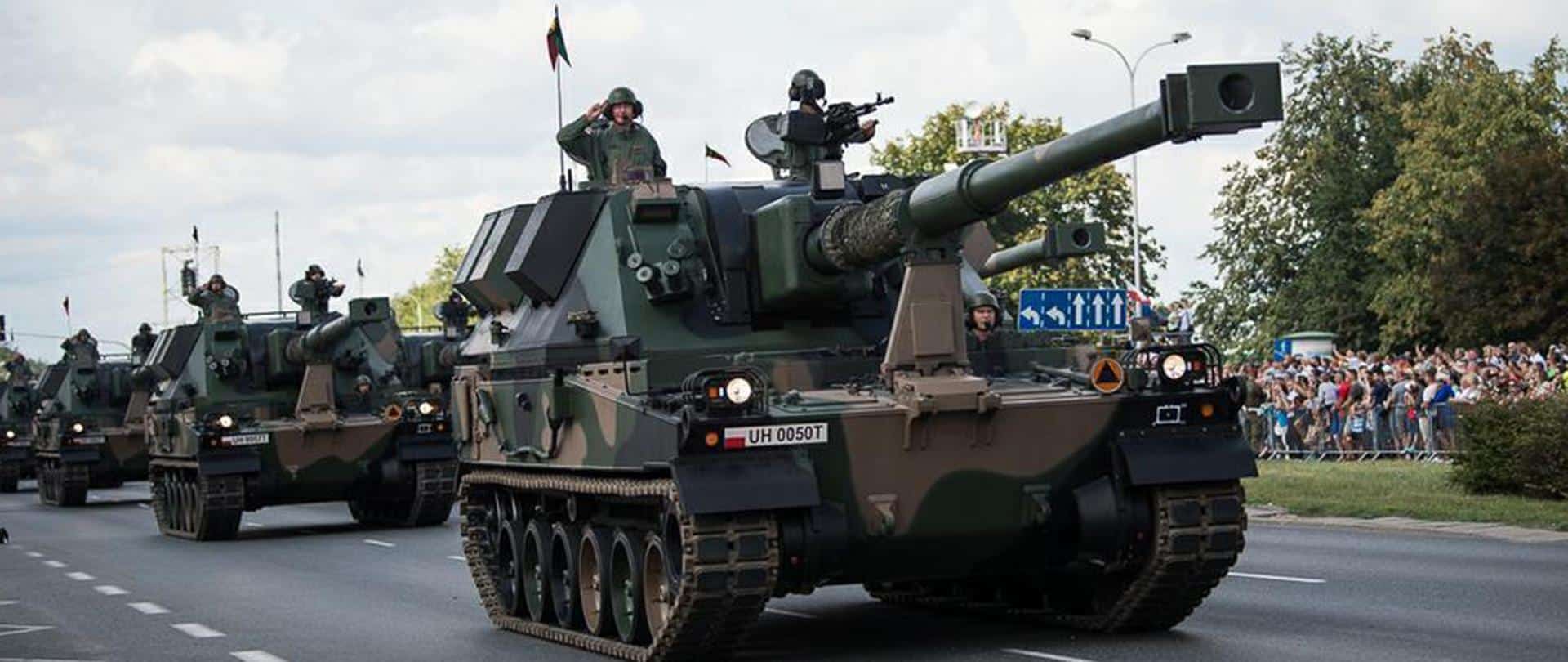
Image:https://www.gov.pl/
Military Personnel
Poland boasts a robust military force, with total active personnel of approximately 105,000. This dedicated and skilled group of men and women formed the backbone of Poland’s defense capabilities. Their unwavering commitment to protecting the nation and upholding NATO’s principles demonstrates Poland’s readiness to contribute to the alliance’s collective defense.
Modernization Efforts
Poland recognizes the importance of modernizing its armed forces to ensure they remain practical and relevant in the face of evolving security challenges. The country has significantly upgraded its military capabilities, investing in advanced weaponry, technology, and infrastructure.
One notable modernization initiative is the “Polish Armed Forces Technical Modernization Plan,” which aims to enhance Poland’s military capabilities by acquiring state-of-the-art equipment and technology. This plan strengthens Poland’s defense capabilities and enhances its interoperability with other NATO members, ensuring seamless coordination during joint operations.
Poland’s commitment to modernization goes beyond hardware. The country also focuses on enhancing its military training and education programs, equipping its personnel with the necessary skills and knowledge to effectively respond to emerging threats. Poland remains at the forefront of military readiness through continuous training exercises and joint operations with NATO partners.
In conclusion, Poland’s solid military personnel and unwavering commitment to modernization make it a vital and influential member of NATO. The country’s dedication to collective security and ongoing efforts to enhance its defense capabilities solidify its position as one of the strongest allies within the alliance. With Poland’s continued contributions, NATO can confidently stand united in the face of challenges.
10.Netherlands
The Netherlands undoubtedly deserves a notable mention when discussing the strongest NATO members. This small yet powerful European country has significantly contributed to naval capabilities and the aerospace industry. Let’s explore these aspects in detail:

Image: https://english.defensie.nl/
Naval Capabilities
The Netherlands boasts a formidable naval force crucial to NATO’s maritime operations. With a long maritime history and a strategic location along the North Sea, the Dutch Navy has developed advanced capabilities to protect its waters and contribute to collective security efforts.
One of the crown jewels of the Dutch naval fleet is the Royal Netherlands Navy’s multi-purpose frigates. These highly capable warships have state-of-the-art technology, advanced weapon systems, and robust communication networks. They enable the Netherlands to effectively participate in national and international naval operations.
The Dutch Navy also places great emphasis on maintaining a strong marine capability. Their Marine Corps is highly trained and specialized in conducting amphibious assaults and supporting land forces in various operations. This capability enhances the Netherlands’ defense posture and enables them to contribute effectively to NATO’s expeditionary missions.
Aerospace Industry
The Netherlands has a thriving aerospace industry vital to NATO’s air capabilities. Dutch aerospace companies are renowned for their expertise in aircraft manufacturing, maintenance, and advanced technological innovation.
One prominent player in the Dutch aerospace industry is Fokker Technologies. This company has a rich history in aviation and has been involved in producing military aircraft, components, and systems. Their contributions to the aerospace sector have greatly enhanced the Netherlands’ defense capabilities.
Furthermore, the Netherlands is a critical partner in developing and producing the F-35 Lightning II, also known as the Joint Strike Fighter (JSF). This state-of-the-art aircraft is set to become the backbone of NATO’s airpower. The Dutch involvement in the F-35 program demonstrates their commitment to staying at the forefront of aerospace technology.
In addition to manufacturing, the Netherlands excels in space research and satellite technology. Dutch space agencies and companies contribute to NATO’s satellite communications and surveillance systems, providing crucial data for military operations and enhancing situational awareness.
The Dutch aerospace industry’s strong presence and innovative contributions make the Netherlands indispensable to NATO’s air capabilities.
The Netherlands’ naval capabilities and aerospace industry showcase the country’s dedication to maintaining strong defense capabilities and contributing to NATO’s collective security efforts. Their advanced naval fleet and expertise in aerospace technology make them a valuable asset within the alliance.
The Bottom Line:
In conclusion, the NATO alliance comprises ten strong and influential member countries. Each member brings unique strengths and contributions to the coalition, ensuring a collective defense against potential threats. From the military prowess of the United States to the strategic location of Turkey, and the technological advancements of countries like Germany and the United Kingdom, NATO benefits from the diverse capabilities of its members.
The United States remains the cornerstone of NATO, providing a significant portion of its military capabilities and resources. However, other member states such as Germany, France, and the United Kingdom also play crucial roles in shaping NATO’s policies and operations.
Additionally, countries like Turkey, with its strategic position at the crossroads of Europe and Asia, offer vital access points for NATO forces. Their geographical location enhances the alliance’s ability to respond swiftly to emerging threats in various regions.
Furthermore, smaller member states like Norway and the Netherlands contribute significantly in terms of advanced technology, intelligence sharing, and specialized military expertise. These countries prove that size does not determine a member’s strength and value to the alliance.
Overall, NATO’s strength lies in its collective defense approach, wherein member countries work together to deter aggression and maintain peace and stability. The diversity and cooperation among the ten most vital NATO members ensure the alliance remains a formidable force in today’s complex global landscape.
Related Articles
10 Best Handguns for Self-Defense
When it comes to...
The Truth About Sanctions: Why Don’t They “Work”?
In 2022,...
History of Israel-Palestine Conflict
Israel and...
After the WAR initiated by HAMAS on October 7th, the Middle East will not be the same
On the -th of...
The Israeli army is prepared for an offensive on the Gaza Strip, involving attacks from “air, sea, and land.”
The IDF (Israel...
War in Israel: Current Developments – Video
Rafah...
Russia vs USA: Who Would Win in a Potential War?
In the...
NATO vs China: Who Would Win in a Potential War?
In the realm of...
11 Best Assault Rifles in the World
Welcome to a world...
Yevgeny Prigozhin (Wagner founder) is dead
According...
What You Need to Know About Joining NATO
Has any country...
Terrifying Realities of a Potential Nuclear War
The Devastating...
What to Do in Case of a Nuclear Attack
What to Do in Case...
11 Strongest and Most Powerful Navies in the World
When it comes to...
The Most Powerful Nuclear Weapons
The sheer power...
Understanding the Nature of War – The Clash of Wills
War is the...
Ukrainian Defense Forces Celebrate One-Year Anniversary of Kherson Region Liberation
Around one year...
Prigozhin First Video Speech After Unsuccessful Uprising
Following a recent...
11 Best Sniper Rifles in the World
Important Factors...
What is Russia saying about the war in Ukraine, Episode 1
Did you ever...
